Growing cucumbers in the open field
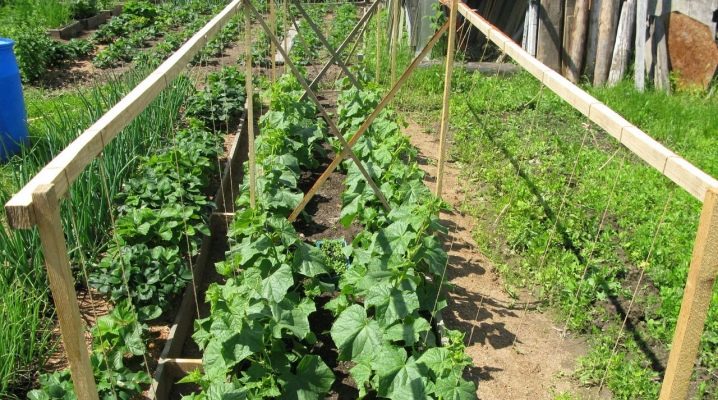
Almost all gardeners grow cucumbers at their dachas. It is quite easy to care for this culture. Therefore, even owners of small plots can get a good harvest of green cucumbers.
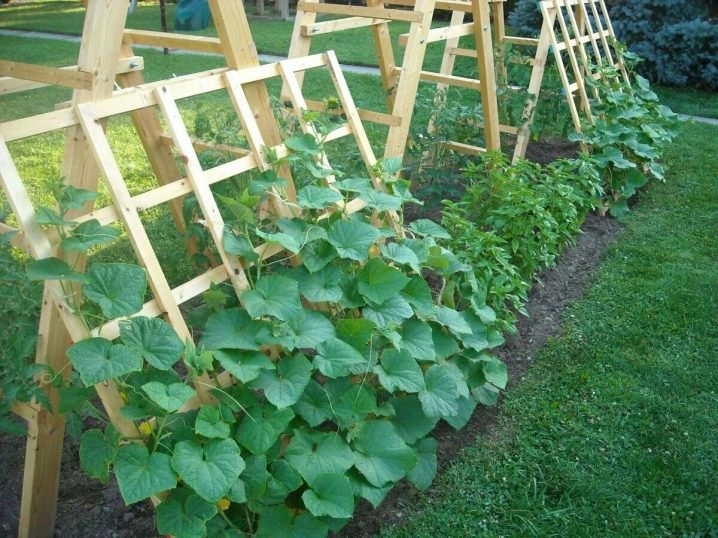
The necessary conditions
The technology for growing these plants in the garden in the open field is quite simple. First of all, the gardener needs to choose a suitable place for planting vegetables. In this case, you need to focus on some criteria.
- The soil. For cucumbers to develop well, they need to be planted on fertile soil. It is recommended to prepare the beds in the fall. For this, the site is cleaned of plant residues. Manure or chicken droppings are added to the soil. The latter should only be used on very poor soils. After fertilization, the soil is well dug up. In the spring, the beds are loosened again. Only then can the gardener start planting cucumbers.
- Illumination. Cucumbers are light-loving plants, so it is not recommended to plant them in the shade. It is also important that the bushes are not constantly in direct sunlight. This leads to the fact that the foliage becomes tough and prickly, and the whips dry up and break off. Therefore, the plants need to be shaded. Usually, a small mosquito net shed is erected next to the bushes.
- Predecessors and neighbors. Legumes and root vegetables can be good precursors for cucumbers. In addition, they can be grown where onions and garlic previously grew. Pumpkin seeds are bad precursors for cucumbers. If we talk about the neighborhood, it is not recommended to plant plants next to tomatoes. This leads to the fact that cultures are more likely to get sick. Onions will become good neighbors for cucumbers. In hot regions next to this crop, you can plant corn, which will protect the bushes from the scorching sun.
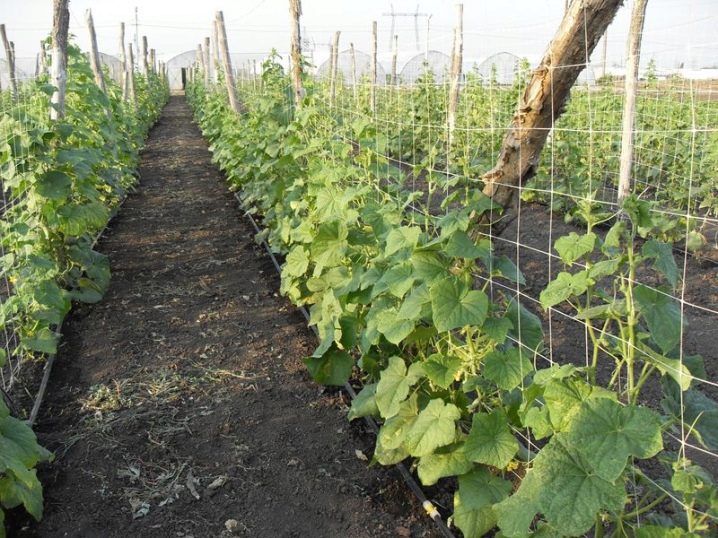
It is very important to wait until warming before planting cucumbers. In the Moscow region and the middle lane, planting seeds can be done in May, in cold regions - in early June. The specific disembarkation dates usually depend on the weather conditions. Some gardeners, when choosing the right time for planting, also focus on the lunar calendar.
Planting methods
You can plant cucumbers on the street both as seedlings and seeds. Each method has its own characteristics.
Seedlings
Seedlings are usually cultivated in the northern regions of the country. This allows you to get a good harvest even if the summer is very short.
Before planting, the seeds must be tested for germination. First, you need to sort them manually. After that, the seeds are dipped in a saline solution for a few minutes. Those grains that have surfaced must be removed. The rest - rinse under running water and dry.
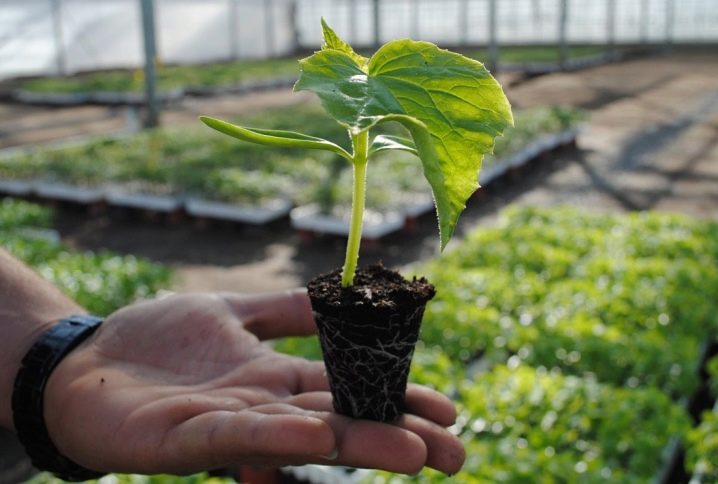
The planting material is also necessarily disinfected. For this, a weak solution of potassium permanganate is usually used. This helps protect cucumbers from fungal diseases. The use of growth stimulants helps to accelerate the growth of seedlings. Such products must be used following the rules indicated on the packaging.
You can plant seeds for seedlings both in containers and in separate cups or pots. Fill them with a mixture of fertile soil, peat and humus. These products are mixed in equal proportions.

You don't need to put the seeds too deep in the soil. After planting, the planting material must be watered. Water for this should be used warm.After the first shoots appear in containers or cups, you can feed the greens. It is recommended to store containers with plants on the windowsill or on the balcony. They need to get enough sunlight.
The technological chart for growing cucumbers indicates that it is possible to plant seedlings in open ground in 2-3 weeks.
Before planting seedlings, the beds must be fertilized with manure mixed with wood ash. The soil should be well dug up.

Transplant green seedlings carefully. To begin with, the plants must be watered abundantly. After that, each seedling must be carefully removed from the container or pot along with a clod of earth. Next, the plants need to be placed in prepared holes and watered abundantly.

Seeds
When planting cucumber seeds in open ground, they are not germinated. But they still need to be calibrated and disinfected. After that, you can start planting seeds. In this case, it is worth adhering to some rules.
- Sow seeds only in well-warmed soil. Otherwise, they may die.
- Do not plant seeds too deeply. The average depth of the furrows is 2-3 centimeters. The distance between the individual rows should be within 30 centimeters.
- It is worth watering the rows before sowing seeds. If done afterwards, they can be pulled deep into the soil. Because of this, they will not be able to germinate.
- It is not worth tamping the beds after planting the seeds. It is enough just to sprinkle them with previously loosened soil.
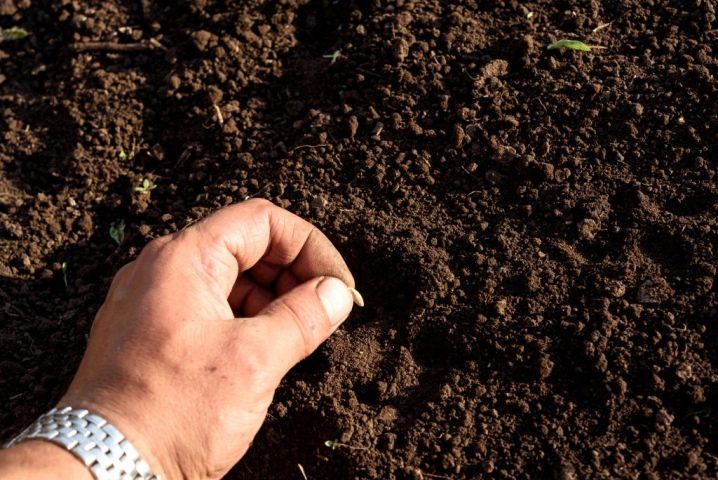
If, after planting the seeds, the weather becomes colder, the beds should be covered. Cucumbers will definitely not die under film or agrofibre. In this case, it will be necessary to remove the shelter after the first shoots appear on the beds.
Care
In order for the cucumbers planted in open ground to grow and develop normally, all the rules of agricultural technology must be observed.
Weeding
At first, after the emergence of seedlings, it is not recommended to loosen the soil. Indeed, in this way, the roots of young plants can be damaged. When the seedlings grow up, the soil will need to be loosened regularly. This is usually done after weeding.
It is useful to huddle cucumbers growing in open ground, twice a season is enough. This procedure will help the plants to strengthen their roots. Instead of hilling the beds, they can be mulched. This procedure not only protects the plant roots, but also allows the soil to retain moisture for longer.

You can use hay, vegetable waste, peat or compost as mulch.
Watering
Regular watering will also help to increase the yield of cucumbers. This should be done several times a week. On hot days, it is worth watering cucumbers daily. To prevent the cucumbers from getting sick, it is recommended to water them with warm, settled water. It is best to carry out this procedure in the early morning or late evening, when there is no scorching sun.

Fertilizer
To increase the yield of plants, they also need to be fed regularly. On average, gardeners fertilize the bushes 2-3 times per season.
- First feeding. For the first time, fertilizers are applied to the soil 10-12 days after germination. For this, organic fertilizing is used. This can be mullein or chicken droppings. The products are diluted in warm water. The ready-made solution is used for watering plants at the root. If the beds were fed before planting cucumbers, and the soil on the site is not too poor, you can skip the first feeding.
- Second. The second time you can feed the cucumbers in a week or two. For this, fertilizers are used, which contain a lot of nitrogen. Such dressings can speed up the growth of greenery. Mineral products or an ash solution can be used to fertilize the bushes. The use of herbal tea also has a good effect on the development of plants.
- Third feeding. The third time you can spray the plants on the leaf. At the beginning of fruiting, fertilizing with a high potassium content is usually applied to the soil. This promotes the growth of large and tasty fruits.
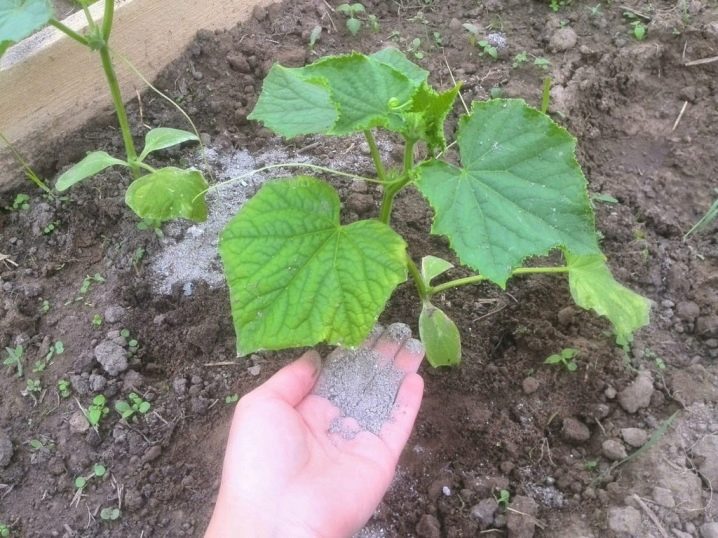
It is especially important to feed hybrid cucumbers. To get a good harvest, fertilize the soil should be applied more often. For feeding cucumbers, you can use not only purchased products, but also such folk remedies as hydrogen peroxide, wood ash or plant waste.
Fertilization is best combined with soil cultivation. This will allow nutrients to reach the roots faster.
Pinching
To stimulate the growth of side shoots, a large bush must be pinched correctly. This procedure should be carried out after several main leaves appear on the main stem. You need to form both ordinary cucumbers and hybrids. The step-by-step process of forming bushes consists of several steps.
- First you need to remove all the greens up to the fifth leaf. This should be done with a sharp pruner or garden shears.
- Next, you need to pinch all the side shoots. This will need to continue to be done as the bushes grow further.
- The main stem is carefully trimmed. Thanks to this, the bush has more lateral processes with female flowers.

Remove leaves and shoots as close to the base of the stem as possible.
Garter
Outdoor cucumbers are recommended to be tied up. In this case, the fruits develop better. It also makes it easier to care for the bushes. The same can be said about fruit picking. Plants are usually tied to simple do-it-yourself tapestries. They can be made from metal pipes or wooden posts. A plastic or metal mesh is fixed between these supports.
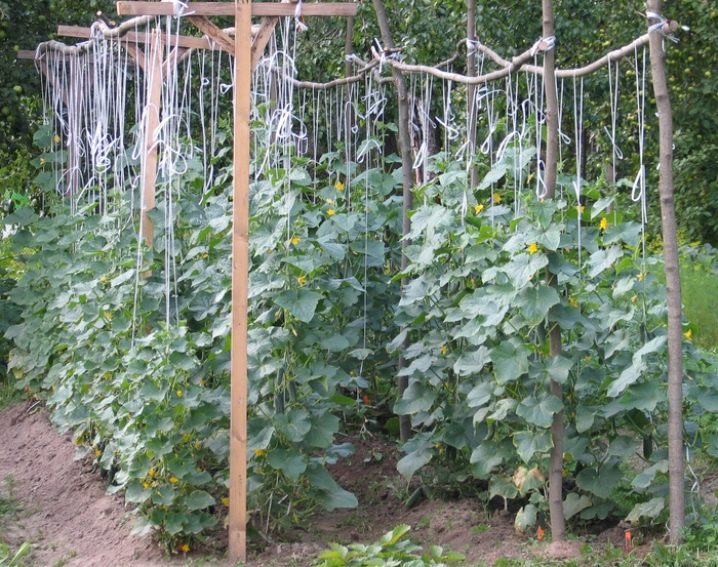
Such a trellis is installed even before planting cucumbers. In the future, the gardener carefully directs the shoots in the right direction. Cucumbers quickly entwine it and turn it into a green wall. Such a vertical structure must be stable. Otherwise, the support will simply break under the weight of the fruit.
If there is no time for the construction of such trellises, it is recommended to plant cucumbers next to trees or some buildings. On each wall, you can fix a metal or nylon mesh, along which cucumbers will trail.
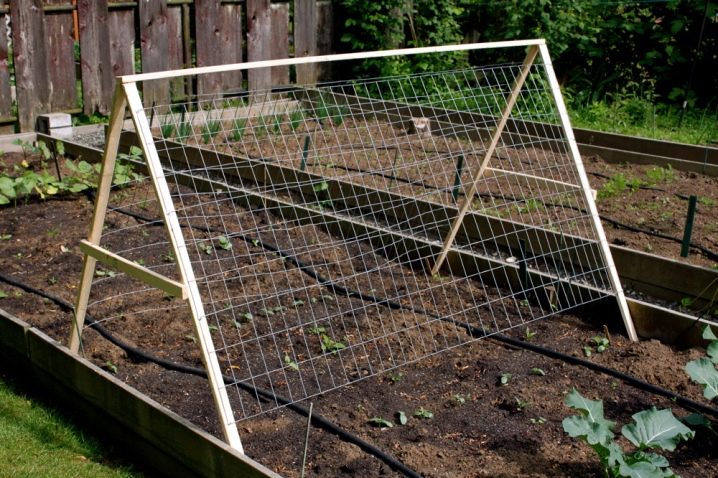
Diseases and pests
Having decided to grow cucumbers on your site, it is important to immediately understand what diseases and pests are dangerous for them. First you need to talk about common diseases.
- Powdery mildew. This is the most common disease that affects not only cucumbers, but also other plants planted in the neighborhood. The foliage of diseased bushes is covered with a dense white bloom. Over time, the plant weakens and dies. In order to prevent the spread of the disease, the damaged foliage must be removed. Next, the plants must be sprayed with a solution of copper oxychloride.
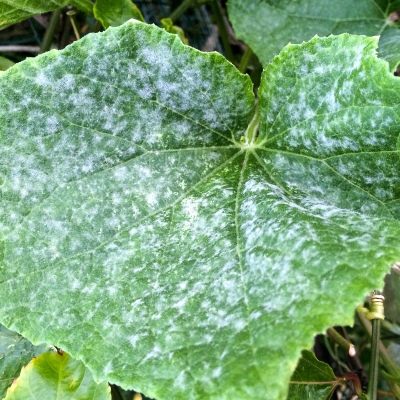
- Root rot. This disease also destroys plants quickly enough. At the same time, gardeners usually notice it very late. To avoid the development of fungal diseases, cucumber stems must be opened. After all, such diseases usually develop in conditions of high humidity, when water accumulates under the cucumber foliage.
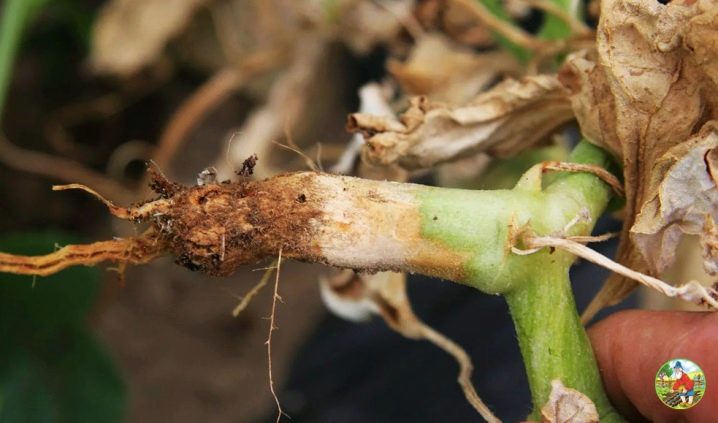
- Gray rot. The disease develops during the rainy season. The affected foliage becomes covered with a gray bloom, and then turns yellow and dries up. It is very difficult to fight this disease, so the infected plants are usually simply removed.

Insects, such as aphids, spider mites, or sprout flies, can also harm cucumbers.
In order to prevent their appearance on the site, the beds must be regularly dug up, weeded and cleaned of plant debris. If necessary, they are treated with fungicides.
Harvesting and storage
Both young and mature cucumbers are considered suitable for consumption. It is recommended to collect fruits from the beds as often as possible. In this case, new ovaries will appear on the lashes. It is best to do this in the early morning or late evening. Collect the fruits carefully, trying not to damage the whip.
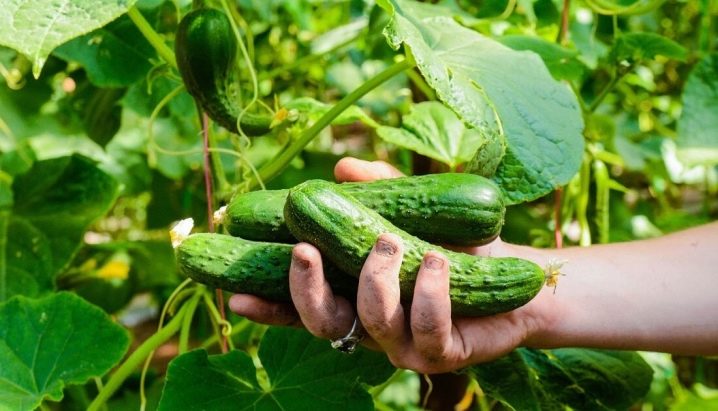
There are many ways to store cucumber crops.
- Conservation. Most often, green fruits are canned. Jars of canned cucumbers are perfectly stored in the cellar or basement, as well as in a regular closet or on the balcony.
- Freezing. Frozen cucumbers in winter can be used for making salads, okroshka or pickles. Before freezing, vegetables are usually cut and placed in tight plastic bags. In the freezer, cucumbers can be stored for several months. Vegetables are thawed for a few minutes at room temperature before use.
- Cold storage. Cucumbers do not have a long shelf life. Therefore, you can put them in the refrigerator for a short time. Store the cucumbers in the vegetable compartment.
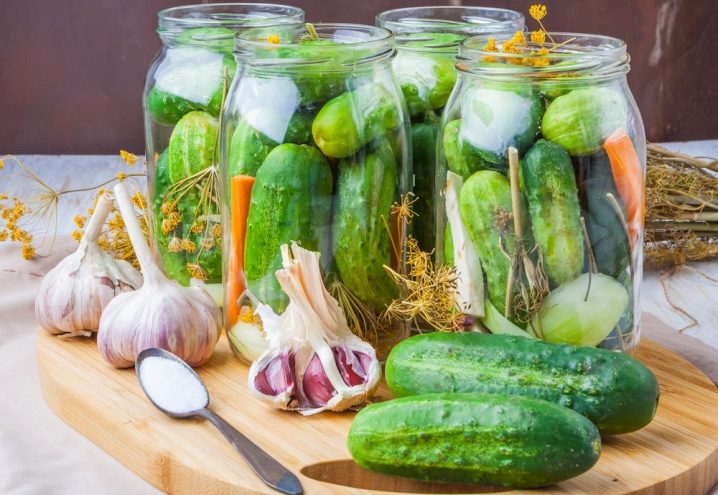
Both fresh and frozen or canned cucumbers are high in vitamins and minerals. Therefore, eating them is useful in any form.













The comment was sent successfully.